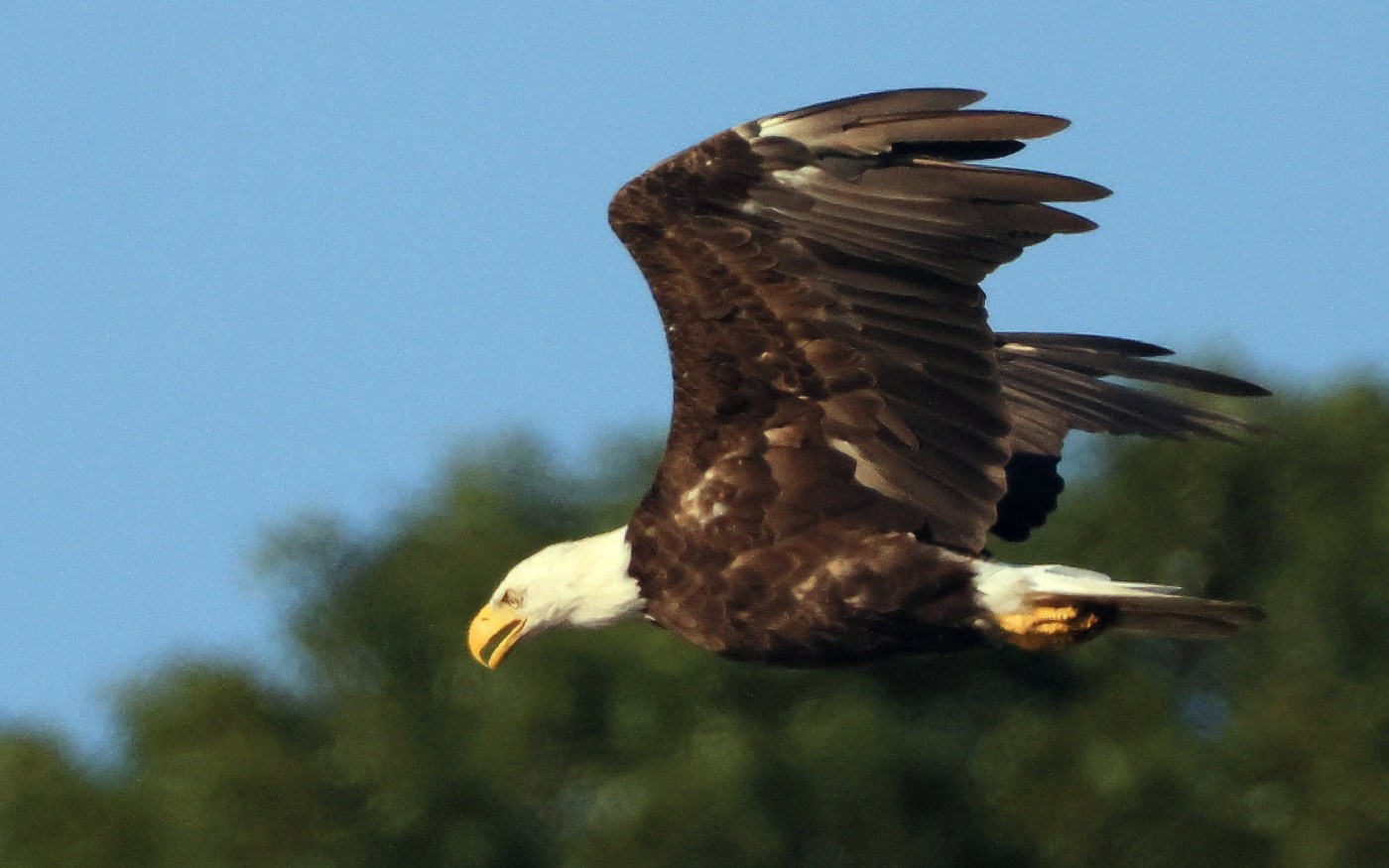Mike Magner | (TNS) CQ-Roll Call
WASHINGTON — In the rush toward recess last week, the Senate moved to correct an oversight that many Americans might not even be aware of when lawmakers passed a bill to designate the bald eagle as the national bird.
Since it was engraved on the Great Seal of the United States in 1782, the eagle has been universally assumed to be the country’s national bird, just as the Baltimore oriole is the state bird in Maryland and the robin is so named in Connecticut, Michigan and Wisconsin.
But authors of books on the bald eagle discovered in recent years that Congress never officially designated a national bird, even though it’s the only flying creature that adorns U.S. currency, many military insignias and the seals of numerous government agencies, including the departments of Defense and Justice.
“It’s kind of astounding to me that no one’s ever picked up on this before,” said Preston Cook, who has collected more than 40,000 pieces of eagle memorabilia over nearly six decades that are now housed in the National Eagle Center, a nonprofit educational organization in Wabasha, Minn.
“But it’s one of those little parts of history that I don’t want to assume anymore,” Cook said. “I want to make sure it’s in its rightful place, and that it is our national bird.”
Cook, who wrote “American Eagle: A Visual History of Our National Emblem” published in 2019, and Jack E. Davis, a history professor at the University of Florida who authored “The Bald Eagle: The Improbable Journey of America’s Bird” published in 2022, teamed up this year to persuade lawmakers to make it official. They targeted those from states with some of the largest populations of bald eagles, asking them to introduce legislation declaring it the national bird of the United States.
The Senate bill from Minnesota Democrat Amy Klobuchar and Wyoming Republican Cynthia Lummis passed by unanimous consent on July 29.
“These majestic creatures have long been viewed as the official bird of this country and it is past time we made it official without costing taxpayers a single cent,” Lummis said in a statement when the bill was introduced in June.
A companion bill sponsored by Rep. Brad Finstad, R-Minn., is expected to see action this fall. “I am proud to work alongside the National Eagle Center in Wabasha to introduce this legislation which will officially classify the bald eagle as the national bird — its proper place of honor as an integral part of our national identity,” Finstad said.
“There’s really very little reason to not support it,” Cook said. “It doesn’t call for appropriations or change anything, because everybody already thinks it’s the national bird.”
From memorabilia to movement
Cook’s lifelong obsession with eagles began when he was growing up in a family of collectors in California in the 1960s. He went to the 1965 movie “A Thousand Clowns,” in which the free-spirited Murray Burns, played by Jason Robards, visited an antique store in New York City and bought a statue of an eagle, saying, “You can’t have too many eagles.”
“As I left the theater I said to myself, ‘That might be an interesting thing to collect,’” Cook said. A few months later he was drafted and was issued a uniform with brass buttons containing the Army seal, which features an eagle with an olive branch in one talon and 13 arrows in the other. Thus began his collection of more than 40,000 eagle items now on display at the center in Wabasha near Cook’s current home on the banks of the Mississippi River.
About 15 years ago, Cook decided to write a book about his memorabilia and wanted to include a chronology of America’s connections to eagles, starting with the adoption of the Great Seal of the United States on June 20, 1782, by the Second Continental Congress.
That’s when he discovered that the eagle had never been officially designated as the national bird. He shared his findings with the late Sen. Dianne Feinstein, D-Calif., who had appointed Cook to the housing commission in San Francisco when she was mayor there in the late 1970s. Feinstein wrote to Cook in 2011 that he was correct. He and Davis, his fellow eagle devotee in Florida, used Feinstein’s letter to convince Klobuchar and other lawmakers to introduce legislation to make the declaration.
Both Cook and Davis say the story of the bald eagle has some parallels in the history of America itself.
While the bald eagle has long been revered as a stalwart symbol of the nation’s strength, it also was long reviled as a fierce predator of smaller animals weighing up to 5 pounds, which the majestic birds can swoop down and carry away, Davis said.
“Americans always loved the image of the bald eagle from 1782 on, but what they didn’t appreciate was the species itself. Killing a bald eagle, throughout the 18th and 19th and into the early 20th century, was considered a civic duty” to protect farm animals, backyard chickens and even babies, though there has never been a documented case of a child being killed by an eagle, he said.
The slaughter caused so much decimation of the bald eagle population that Congress passed a law in 1940 making it illegal to kill the birds or harm their eggs. That allowed the eagles to rebound, until the pesticide DDT was introduced after World War II as the principal method of killing mosquitoes that can spread malaria and other diseases.
Environmental researchers learned that DDT thinned the shells of eagle eggs so that most were destroyed when mother eagles sat on them in the nest. That discovery, made public by the writings of Rachel Carson, led to a ban on DDT in 1973, just after passage of the Endangered Species Act that added more federal protections for eagles.
“We pushed the bald eagle to the brink of extinction twice in the lower 48 states, but we redeemed ourselves twice,” Davis said. Today there are an estimated 500,000 bald eagles in North America, he said.
“In many ways it does parallel our history,” Cook said. “It’s a survival story. It’s a story of success. For me it’s a story of the government being involved with the survival of this bird, because if the government didn’t step in then we wouldn’t have that bird.”
Lummis said much the same thing when the Senate bill was passed last week.
“For more than 240 years, the bald eagle has been synonymous with American values, yet it is still not officially our national bird,” she said. “Today’s bipartisan passage brings us one step closer to solidifying the eagle’s place as an enduring symbol of our freedom, and I look forward to seeing this legislation pass the House and signed into law soon.”
___
©2024 CQ-Roll Call, Inc., All Rights Reserved. Visit cqrollcall.com. Distributed by Tribune Content Agency, LLC.












